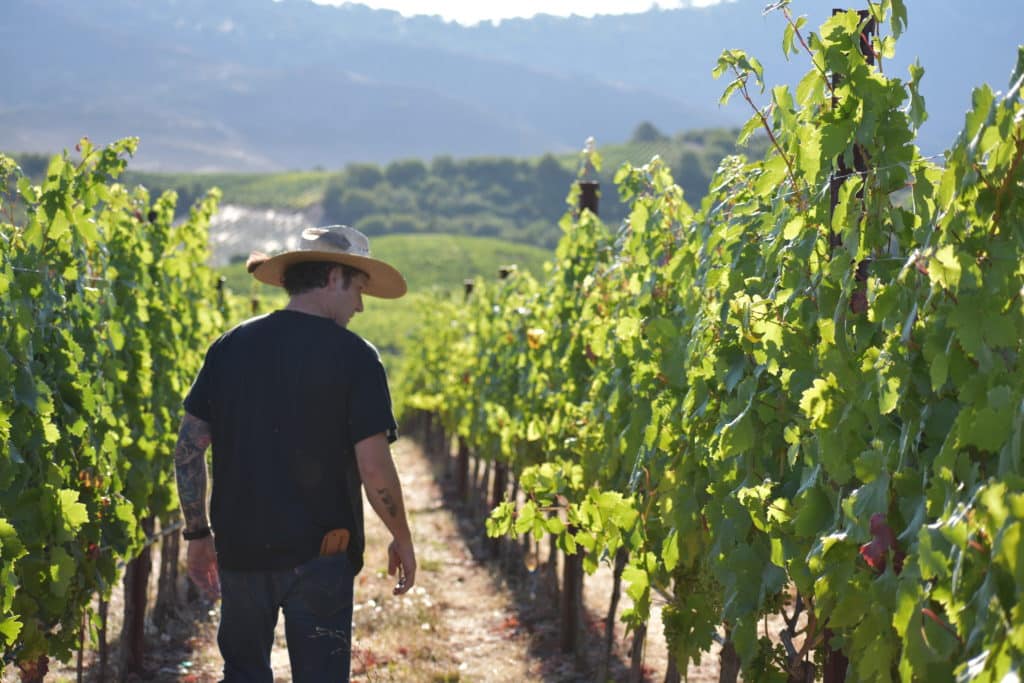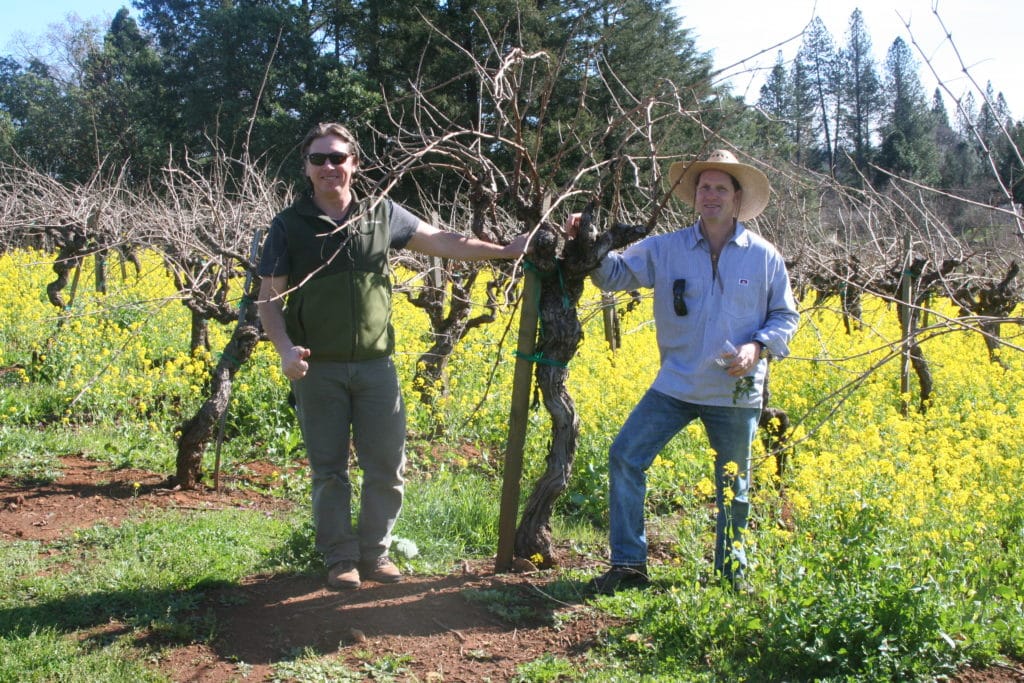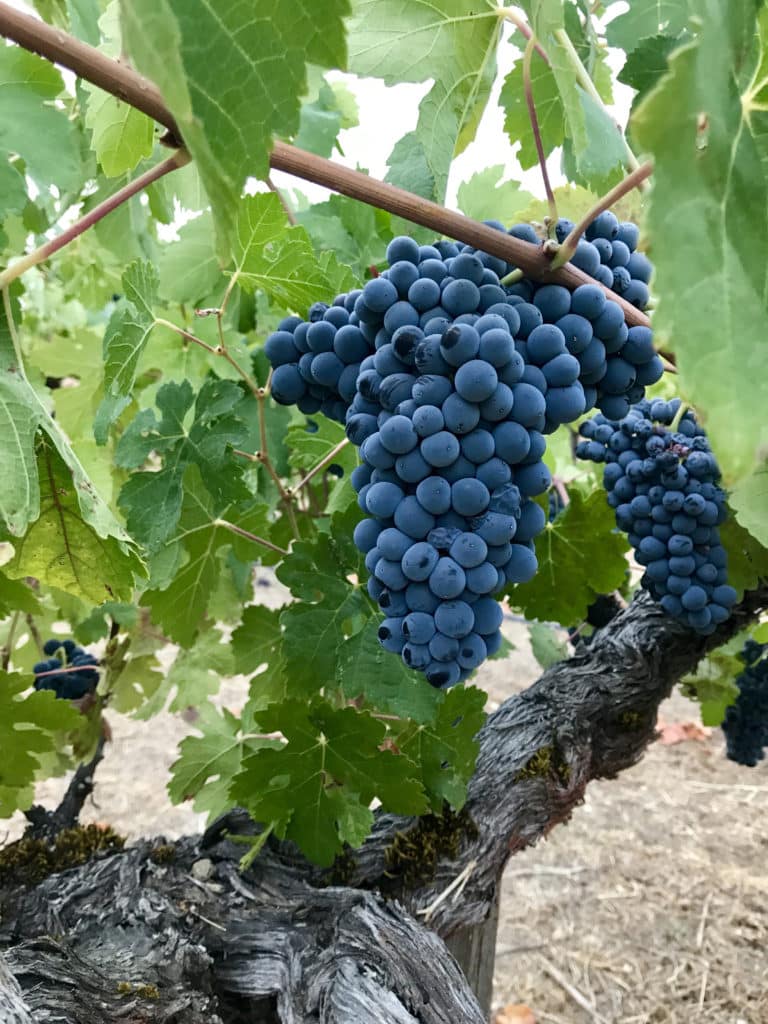Tasting with the Winemaker, Tres Goetting

Robert Biale Vineyards’ winemaker is Trester “Tres” Goetting, a Napa native who in his career, has made exceptional wines from numerous grape varieties all around Napa and Sonoma Valleys. He has been creating wines from the mountains to the valley floors and from the north and to the south of the valley. Tres works alongside Biale Viticulturalist Bob Biale to craft some of California’s most acclaimed Zinfandels and Petite Sirahs. We wanted to get some personal insights from Tres on what it is about the Zinfandel and Petite Sirah from the Napa and Sonoma Valleys on what makes them such challenging, interesting, and fun wines to make.
You were the winemaker for Stagecoach/Krupp Brothers and Ladera before coming to Biale. How would you characterize the differences between mountain-grown Zinfandel and valley floor Zinfandel? Do you handle them differently?
Mountain Zinfandel tends to have more phenolic structure and complexity than valley floor Zinfandel. This means that in general, the mountain Zinfandels will age longer than Zinfandels grown on the valley floor. The aromatics and flavors of mountain Zinfandel usually have a spicy character and can be herbaceous depending on the soil profile, whereas Zinfandel from the floor is usually more fruit driven and elegant. I do handle these wines differently in the cellar and during fermentation. It is really all about extraction techniques (punch downs and pump overs) and fermentation temperatures that determine the amount of tannin that I target in each of these wines. I handle the mountain fruit with kid gloves in order to achieve a wine that is integrated and balanced as opposed to hard and angular.

At Biale you deal with some of the oldest vines in California. What are “old vines” to you and how would you characterize the taste and winemaking differences between old and young vine wines?
I always say that vines are like people; the young ones are vibrant and fresh, but tend to be one dimensional and the old ones are complex, yet elegant. The official definition of “old vine” is a vine that is at least 50 years old. To me, an “old vine” is one that has experienced an array of seasonal extremes such as drought, frost, flooding, disease, fire, heat, etc. I handle these two types of vines differently in the cellar. First of all, I try to keep them separate as individual lots rather than co-fermenting them. This way I can really see what the differences are between them and then create the perfect blend using the appropriate percentage of each. I treat the older vines more delicately and try to let the fruit express itself as naturally as possible by avoiding unnecessary additives or techniques.

Robert Biale Vineyards was established by the original founders Al Perry, Dave Pramuk, Bob Biale, and Aldo Biale as a preservationist “house of Zinfandel” in Napa Valley. Lately we keep hearing more about Biale Petite Sirah, too. What is different about your Petite Sirah winemaking as opposed to Zinfandel?
I love making the Petite Sirahs at Biale because it reminds me of my old winemaking days of Cabernet Sauvignon and Bordeaux varieties. I make them in the same fashion. The Petite Sirahs are harvested later in the season than the Zinfandels so by the time they start coming into the winery, I am ready to “beat things up” and splash things around and extract some serious color and tannins. This is a welcome change after being so gentle with the vinification process of the Zinfandels. I also ferment the Petite Sirahs at a higher temperature, use different yeast strains, different pressing techniques, different barrel selections, and longer barrel ageing.
Napa and Sonoma are California’s two most famous and historic regions. How do you characterize differences if any between the two regions from a winemaker’s standpoint?
Napa and Sonoma are really two different worlds to winemakers. There are so many differences in the climate, soil profiles, and geology that it becomes evident very quickly that the same variety grown in the two locations will produce wines that are quite different from each other. This is exactly why Sonoma County has a much more diverse selection of grape varieties grown than Napa does. Napa is dominated by Cabernet Sauvignon and Chardonnay because those varieties favor the conditions and soil types that exist in Napa Valley. From a winemaking standpoint, I really enjoy working with fruit from Sonoma County because of its fresher acidity and red vibrant fruit characteristics. On the flip side, I must admit that making wines from Napa vineyards is a real pleasure because of the ripe, rich, and structured characters that the wines embody. I am not saying that one region is better than the other but rather “Profitez de la difference!”